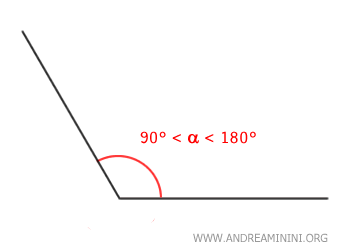Obtuse Angle
An obtuse angle is an angle that measures more than 90 degrees (π/2 radians) but less than 180 degrees (π radians).

In other words, an obtuse angle is wider than a right angle (90 degrees) but narrower than a straight angle (180 degrees).
An obtuse angle is characterized by "extending outward" rather than folding inward like an acute angle.
At first glance, it appears as an "open" angle.
For example, angles measuring 100 degrees, 120 degrees, 150 degrees, and so on are obtuse angles.
Observations
Some observations about obtuse angles:
- Obtuse angles are a subset of convex angles
In an obtuse angle, the extensions of the sides never intersect. Therefore, an obtuse angle is a type of convex angle. However, not all convex angles are obtuse, as acute angles are also convex. - A triangle can have at most one obtuse angle
A triangle is composed of three angles, and the sum of the internal angles is always 180 degrees. Since an obtuse angle is always greater than 90 degrees, the sum of two or more obtuse angles would exceed 180 degrees. Thus, a triangle can have no obtuse angles or at most one obtuse angle.
And so on.
